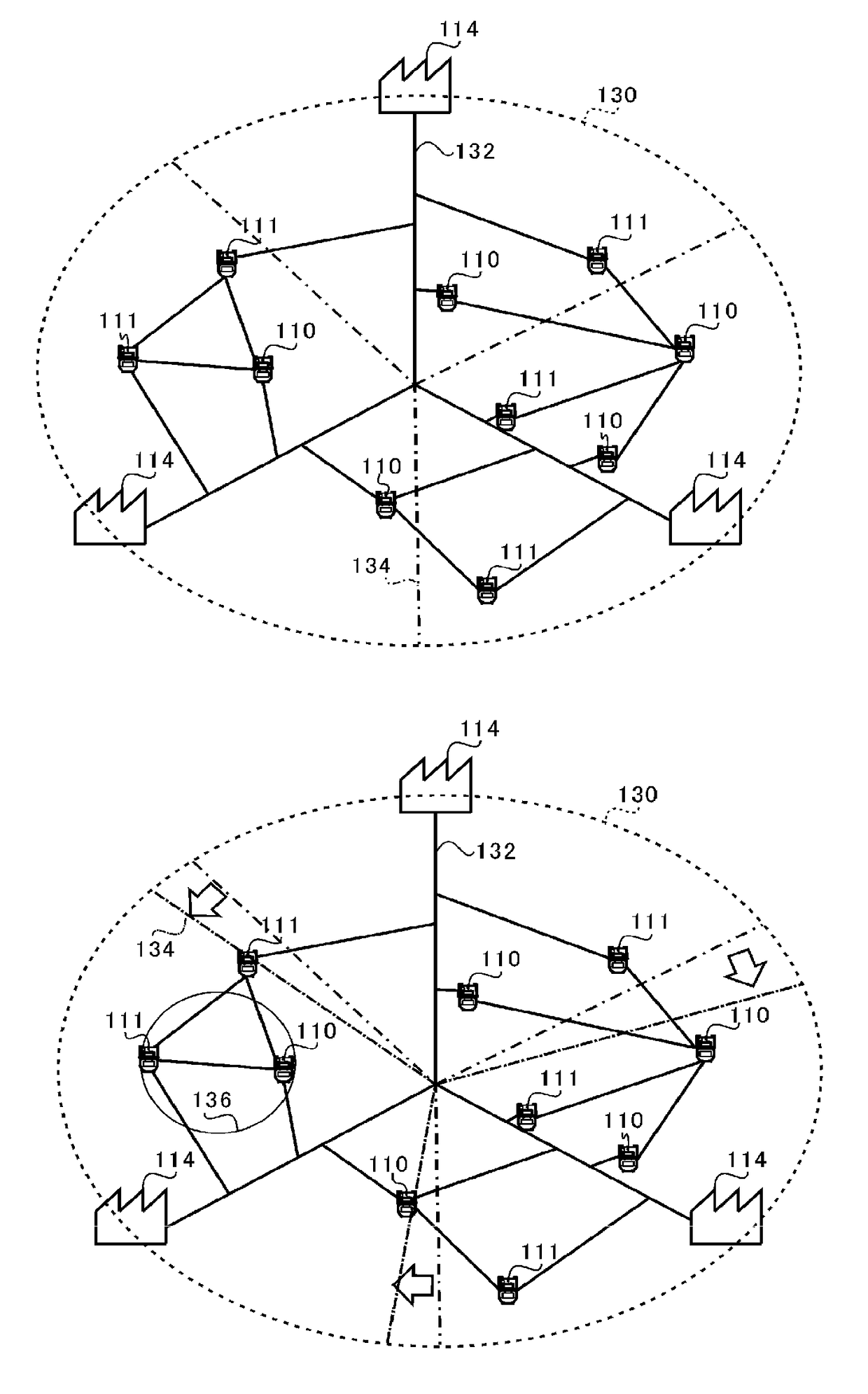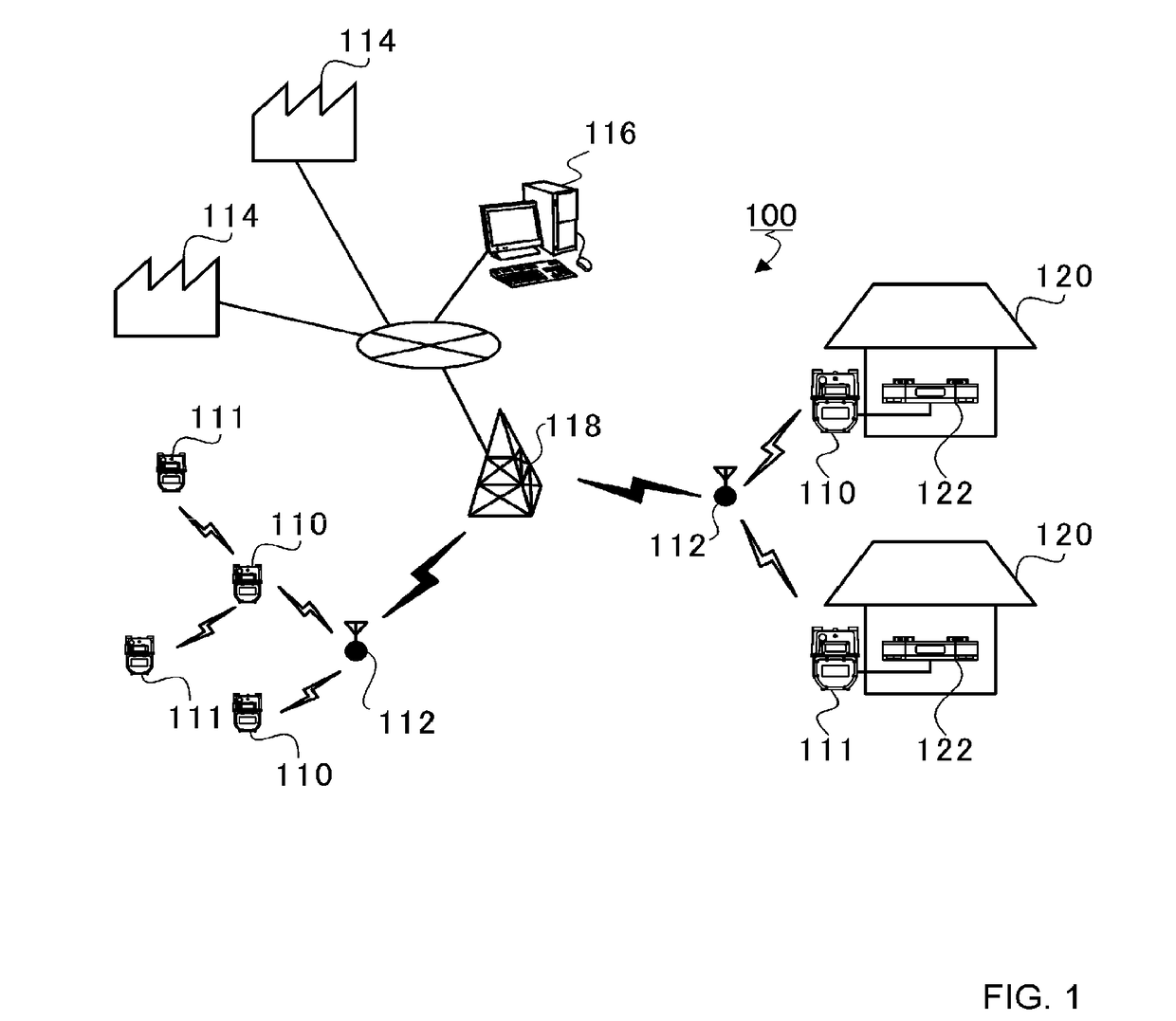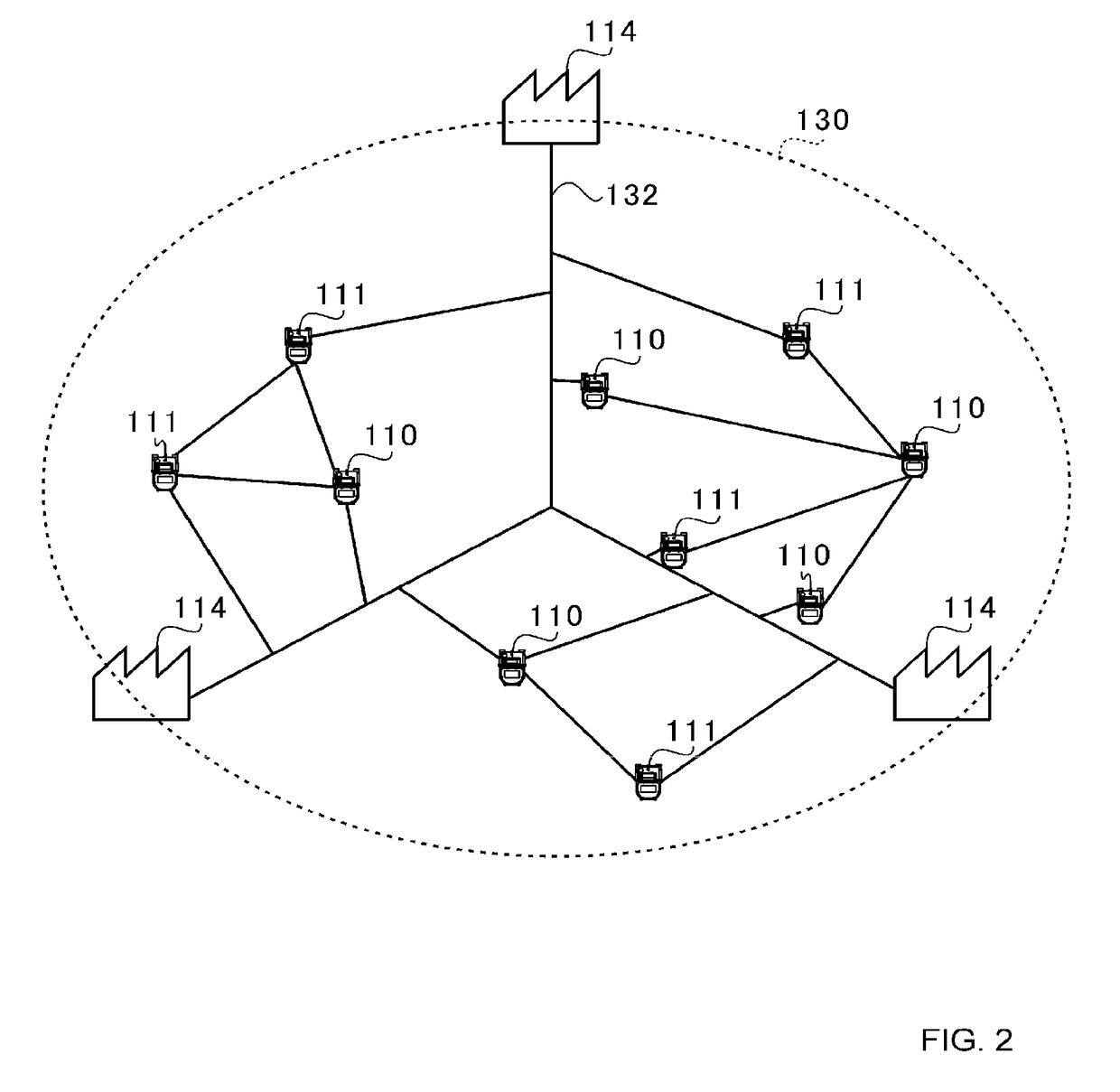Gas meter system and heating value estimation method
- Summary
- Abstract
- Description
- Claims
- Application Information
AI Technical Summary
Benefits of technology
Problems solved by technology
Method used
Image
Examples
modification example
[0108]FIG. 11 is a functional block diagram for illustrating a schematic configuration of a first gas meter 300 according to a modification example of the present invention. As illustrated in FIG. 11, the first gas meter 300 differs from the above-mentioned first gas meter 110 in that a temperature sensor 302 is provided. The remaining configuration is the same as that of the first gas meter 110.
[0109]The temperature sensor 302 measures the temperature of the supplied gas. Then, the heating value derivation unit 164 derives the unit heating value based on the sound velocity derived by the sound velocity derivation unit 160 and on the temperature measured by the temperature sensor 302. With this, the heating value derivation unit 164 can derive the unit heating value of the gas with higher accuracy than that of the first gas meter 110.
[0110]As described above, the first gas meter 300 can derive or measure the temperature and the sound velocity of the gas to derive the unit heating va...
PUM
 Login to View More
Login to View More Abstract
Description
Claims
Application Information
 Login to View More
Login to View More - R&D
- Intellectual Property
- Life Sciences
- Materials
- Tech Scout
- Unparalleled Data Quality
- Higher Quality Content
- 60% Fewer Hallucinations
Browse by: Latest US Patents, China's latest patents, Technical Efficacy Thesaurus, Application Domain, Technology Topic, Popular Technical Reports.
© 2025 PatSnap. All rights reserved.Legal|Privacy policy|Modern Slavery Act Transparency Statement|Sitemap|About US| Contact US: help@patsnap.com



